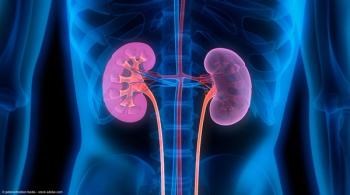
Assessing complications associated with ureteral implantation
"Open ureteral reimplantation for ureteral obstruction in ileal-conduit has excellent early outcomes, though a 1/3 experienced high grade complications during follow up," wrote the study's authors, led by Zhina Sadeghi, MD, of the University of Michigan in Ann Arbor.
In a recent study, early and mid-term outcomes were evaluated among patients who underwent open ureteral reimplantation (UR) into urostomy.
The findings, which were reported at the 2022 Society of Women in Urology Annual Clinical Mentoring Conference,1 showed that no patients in this population required postoperative stents or nephrostomy tubes at a mean follow-up of 14 months.
Twenty-five patients who underwent UR into ileal conduit from 2017 to 2020 were identified. The mean age of this cohort was 69 years, the mean body mass index (BMI) was 30.9 kg/m2, and 72% (18/25) of patients were male. Sixteen percent (4/25) had a history of pelvic radiation and 68% (17/25) had a history of robot-assisted cystectomy (RC).
All patients had preoperative antegrade-nephrostogram (AN) within 3 months prior to the operation. To define pre-operative stricture location, investigators used the most distal location of a normal caliber ureter on AN. To define intraoperative stricture location, the surgeon determined the location of a viable ureter for reimplantation.
At 3 months, 12 months, and on an as-need basis post-surgery, patient outcomes were analyzed using upper tract imaging.
The primary outcome was the need for a percutaneous nephrostomy tube or stent, including evaluation of new or worsening hydronephrosis after UR. The secondary outcomes were glomerular filtration (GFR) to estimate renal function after surgery and grade 3 or higher Clavien-Dindo complications.
Results found that the mean time from cystectomy to reimplantation was 19.6 months, the mean stricture length was 2.88 cm, and the mean length of hospitalization was 5.88 days. 24% (6/25) of patients also had concurrent conduit revision during reimplantation.
Of the strictures assessed from patients on AN, 10 (40%) were right, 11 (44%) were left, and 4 (16%) were bilateral. Strictures on the right side were distal on AN, whereas strictures on the left side were distal in 66% (10/15) and mid-ureter in 33% (5/15) on AN. Although all distal locations on the right side were confirmed intraoperative, 47% (7/15) on the left side were reclassified as distal, and 53% (8/15) were reclassified as mid-ureter.
In addition, right-sided laterality was significantly correlated with the RC method of surgery (P = .02). UR on the right side was also associated with shorter operative times in comparison with left-sided or bilateral strictures (220 minutes vs 284 minutes, P = .053).
Although there was no change in GFR at the latest follow-up (52 vs 49, P = .174), 32% (8) of patients had severe complications within 2 years of the operation. Of these patients, 6 experienced parastomal or abdominal hernias. However, there was no significant association between these severe complications and other preoperative and operative variables.
“Open UR for ureteral obstruction in ileal-conduit has excellent early outcomes, though a 1/3 experienced high grade complications during follow up. Pre-operative AN was more accurate in identifying stricture location on right compared to left and outcomes and complications may not be associated with laterality,” concluded the authors, led by Zhina Sadeghi, MD, of the University of Michigan in Ann Arbor.
Reference
1. Sadeghi Z, Lane G, Yi Y, et al. Early/mid-term outcomes for open ureteral reimplantation into urostomy. Paper presented at: 2022 Society of Women in Urology Annual Clinical Mentoring Conference; February 7-9, 2022; New Orleans, Louisiana. Poster #6292.
Newsletter
Stay current with the latest urology news and practice-changing insights — sign up now for the essential updates every urologist needs.


















